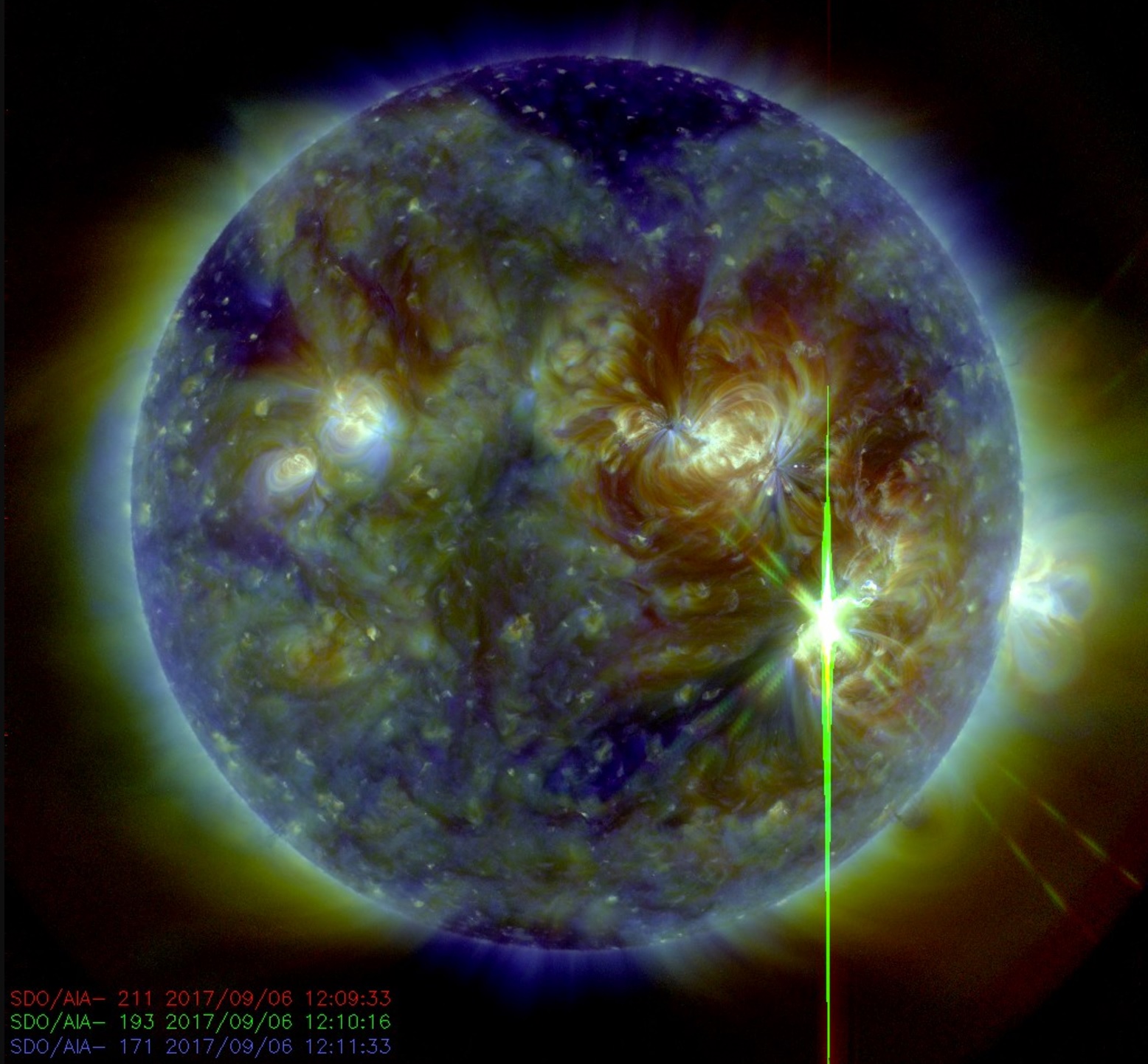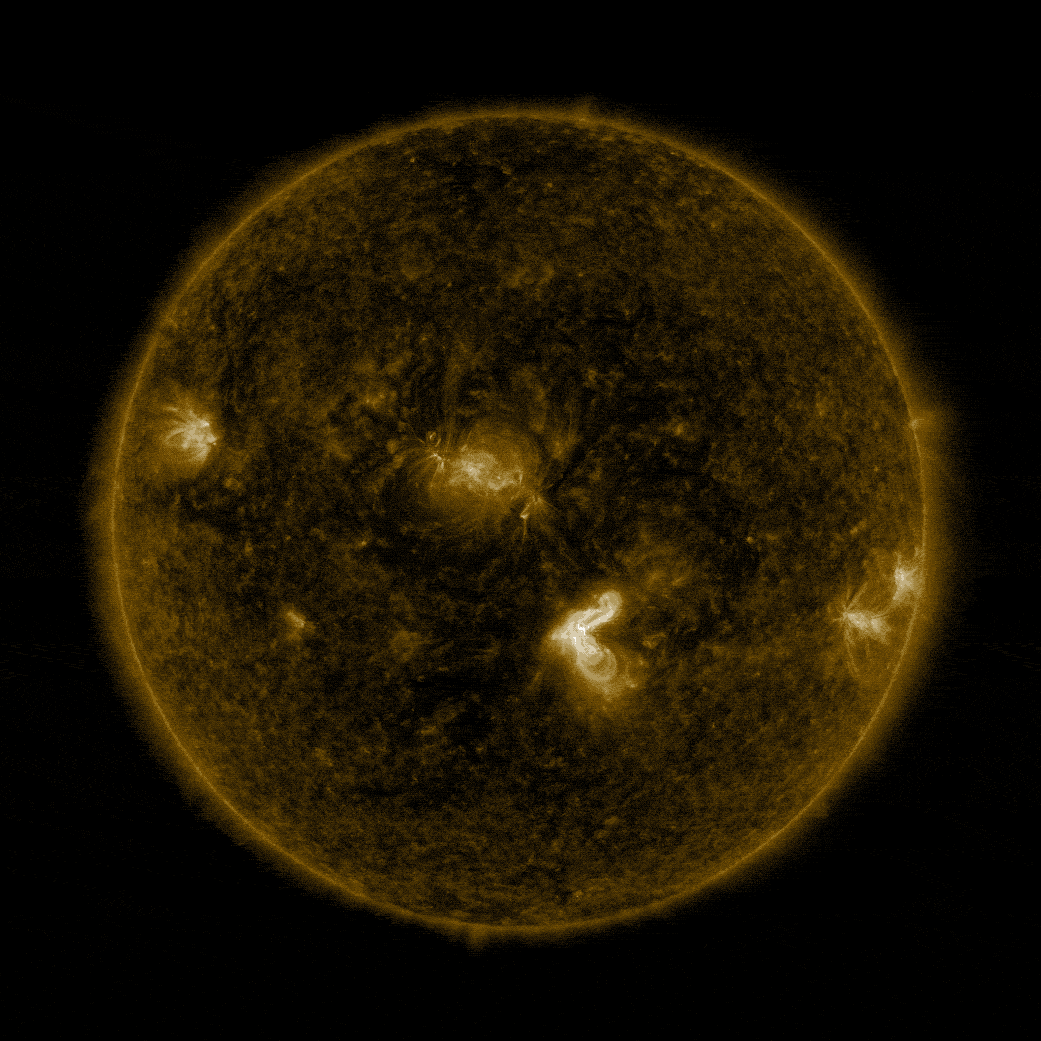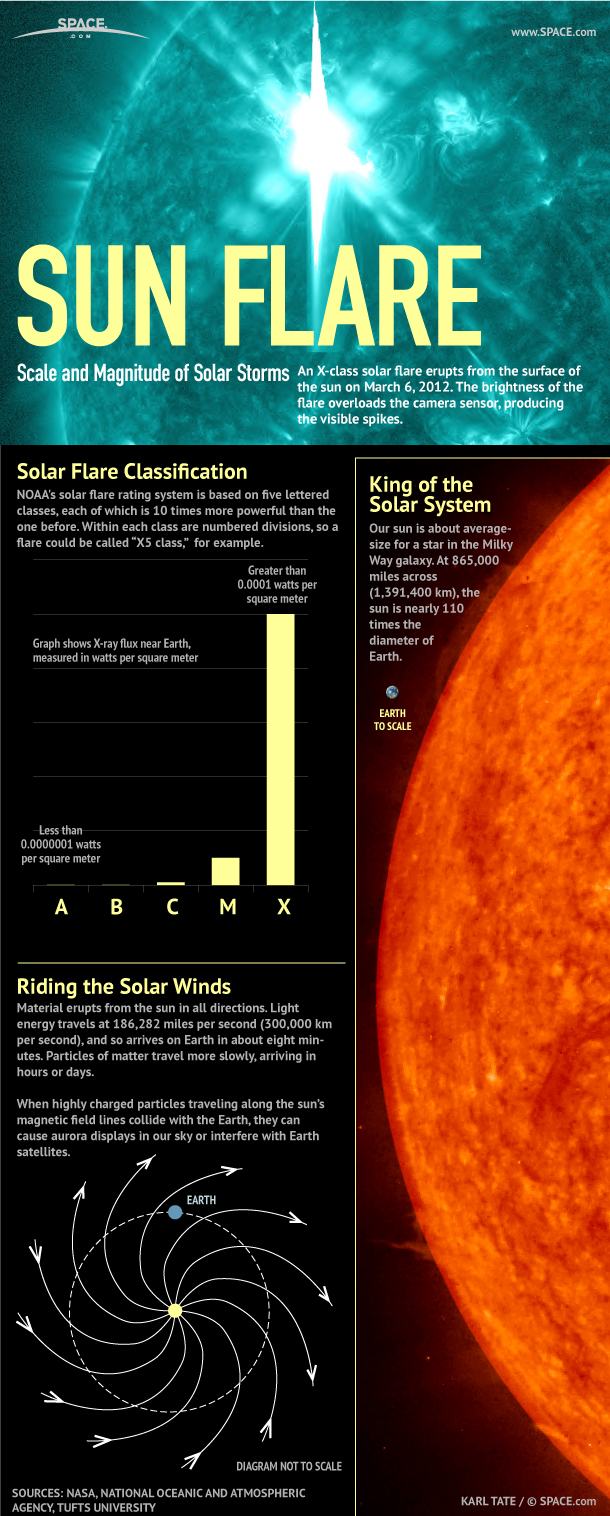Sun Unleashes Monster Solar Flare, Strongest in a Decade
This article was updated at 5:44 p.m. EDT to indicate that a coronal mass ejection was observed coming from the site of the solar flare.
Early this morning (Sept. 6), the sun released two powerful solar flares — the second was the most powerful in more than a decade.
At 5:10 a.m. EDT (0910 GMT), an X-class solar flare — the most powerful sun-storm category — blasted from a large sunspot on the sun's surface. That flare was the strongest since 2015, at X2.2, but it was dwarfed just 3 hours later, at 8:02 a.m. EDT (1202 GMT), by an X9.3 flare, according to the National Oceanic and Atmospheric Administration's Space Weather Prediction Center (SWPC). The last X9 flare occurred in 2006 (coming in at X9.0).
According to SWPC, the flares resulted in radio blackouts: high-frequency radio experienced a "wide area of blackouts, loss of contact for up to an hour over [the] sunlit side of Earth," and low frequency communication, used in navigation, was degraded for an hour. [The Sun's Wrath: Worst Solar Storms in History]

Solar flares occur when the sun's magnetic field — which creates the dark sunspots on the star's surface — twists up and reconnects, blasting energy outward and superheating the solar surface. X-class solar flares can cause radiation storms in Earth's upper atmosphere and trigger radio blackouts, as happened earlier this morning.
During large solar flares, the sun can also sling a cloud of energetic plasma from its body, an event called a coronal mass ejection (CME).
"It was accompanied by radio emissions that suggest there's a potential for a CME," SWPC space scientist Rob Steenburgh told Space.com. "However, we have to wait until we get some coronagraph imagery that would capture that event for a definitive answer."
Get the Space.com Newsletter
Breaking space news, the latest updates on rocket launches, skywatching events and more!
The orbiting Solar and Heliospheric Observatory, a joint project between NASA and the European Space Agency, later provided that answer when it picked up the coronal mass ejection from the event, although according to SpaceWeather.com NOAA analysts are still modeling its trajectory to see whether it is directed toward Earth.
The sunspot responsible for this morning's flares, active region 2673, is the smaller of two massive spots on the sun's surface, at only seven Earths wide by nine Earths tall, according to astrophysicist Karl Battams.
Yesterday, that same sunspot emitted an M-class solar flare — one-tenth the size of an X-class flare — leading to a coronal mass ejection aimed toward Earth that could cause auroras tonight as far south as Ohio and Indiana.


If aimed toward Earth, the CME from these latest flares could lead to even more spectacular auroras, but could also damage satellites, communications and power systems. That cloud of charged plasma would arrive within 1 to 3 or 4 days, Steenburgh said, although CMEs triggered by energetic flares generally come quickly.
The surge of activity might seem surprising, as the sun is approaching its solar minimum, with the lowest levels of activity in its 11-year cycle.
"We are heading toward solar minimum, but the interesting thing about that is you can still have events, they're just not as frequent," Steenburgh said. "We're not having X-flares every day for a week, for instance — the activity is less frequent, but no less potentially strong."
"These kind of events are just part of living with a star," Steenburgh added.
Editor's Note: This article was originally posted at 10:55 a.m. EDT.
Email Sarah Lewin at slewin@space.com or follow her @SarahExplains. Follow us @Spacedotcom, Facebook and Google+. Original article on Space.com.
Join our Space Forums to keep talking space on the latest missions, night sky and more! And if you have a news tip, correction or comment, let us know at: community@space.com.

Sarah Lewin started writing for Space.com in June of 2015 as a Staff Writer and became Associate Editor in 2019 . Her work has been featured by Scientific American, IEEE Spectrum, Quanta Magazine, Wired, The Scientist, Science Friday and WGBH's Inside NOVA. Sarah has an MA from NYU's Science, Health and Environmental Reporting Program and an AB in mathematics from Brown University. When not writing, reading or thinking about space, Sarah enjoys musical theatre and mathematical papercraft. She is currently Assistant News Editor at Scientific American. You can follow her on Twitter @SarahExplains.









